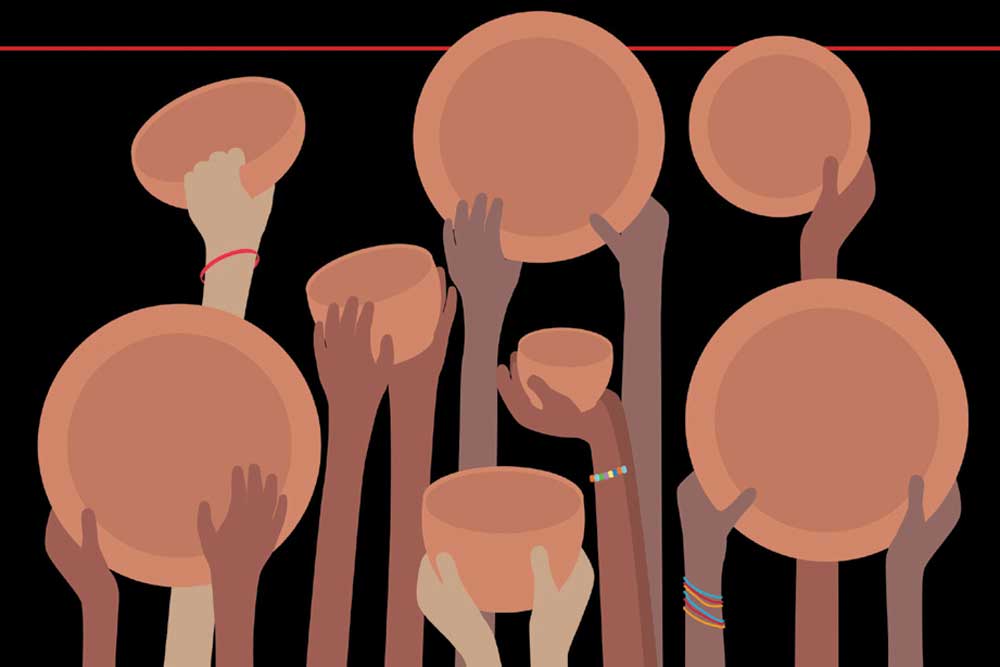Month: September 2022
Assess the view that unpaid voluntary work benefits the participants more than it benefits the people the participants are trying to help.
• assess the role of voluntary workers, their aims and contribution to society
• explore the benefits of voluntary work to the participants and wider society
• make a judgement, based on consideration of the evidence and argument
• voluntary work being for a charity, cause or pressure group
• young volunteers gaining experience and making contacts in sectors of interest to them, improving their future employment prospects
• retired people gaining a renewed sense of purpose from their voluntary activities and from contact with younger people
• participants acquiring a broad range of valuable personal and interpersonal skills
• the chosen group gaining a great deal from the services provided
• charities, in particular, relying on voluntary workers to reduce costs to maximise their potential efficiency and effectiveness
• volunteers not being properly vetted or supervised, possibly resulting in inappropriate behaviour
• volunteers being motivated by religious or other ideological interests, compromising the independence of those they are helping.
Is technology the solution to the problem of global poverty?
Technology is often viewed as a solution to all of humanity’s problems. Afterall technology has opened up many avenues for mankind. From medicines that can cure diseases to software that can crunch and compute vital information, technology has provided endless solutions. It is no surprise then that many people believe that technology can provide solutions to the global problem of poverty. Technology has successfully alleviated poverty in multiple ways in the form of food production, microfinancing and education. However, global poverty is a complex issue and requires a multifaceted approach, that is why technology is only part of the solution to the problem of global poverty.
Technology can help and remove people from the cycle of poverty through access to genetically modified crops. According to the United Nations, around 1.4 billion people rely on agriculture for their daily subsistence. Technology can help these communities by introducing better farming techniques and growing higher yield crops. Most of the times extreme weather conditions destroy the crops for the poor, in such condition technology can prove as a helpful tool. For example, farmers throughout the Global South are turning to SMS-based services for technical support that allows them more easily to adopt new crops and growing techniques. Technology thus provides people with benefits for both natural resources and household income and nutrition. Technology is responsible for the development of ‘high-yielding’ crops like wheat and corn through advances in molecular genetics. However, technology also has a flip side, these technologies meant to help poor farmers often are expensive and end up helping richer businesses, which in turn drives farmers towards poverty. Moreover, even if the poor farmers have access to these technologies, they might lack the technological know-how, which might make such technologies of little use. Thus, while technology has the potential to aid the poor by increasing access to basic necessities, it is unfortunately hampered by several other factors, preventing its effects to be maximised.
Technology, in the form of new media, has contributed significantly to combating poverty. Social media is a prominent tool for spreading knowledge and awareness. It also has the power to influence people to take actions and measures to tackle the issue of poverty. social media, to educate and transform how people engage with reducing poverty. Social media can help in solving the issue of poverty by sharing information to raise public awareness and involvement. An example of this was seen recently, where The Junior League of Savannah participated in the Little Black Dress Initiative where women wore the same black dress for five days. Through the initiative, they tried to illustrate how poverty affects women. Through the initiative, they invited to dialogue about poverty. The influence of social media also encourages people to volunteer and donate to causes that can reduce poverty. An example of this is the Red Nose campaign which has successfully raised $200 million and positively impacted the lives of nearly 25 million children. Many Non-Governmental Organisations around the world employ social media for fundraising and awareness. Thus, technology in the form of social media helps in improving the conditions of the poor and also garner attention towards the issue of poverty.
However, technology cannot help in situations where governments are corrupt and lack governance skills. It is often seen that countries with poor leadership face a greater degree of poverty. Many times, governments fail to manage funds and the mismanagement aggravates the situations. Brazil, Venezuela, and even countries like India are often unable to use technology to better the lives of people, simply due to poor leadership and corruption. Therefore, technology cannot solve the problem of inefficient and corrupt governments.
In conclusion, technology has been an instrumental tool in tackling the issue of poverty to some extent. However, poverty is a complex issue which requires better approaches than just technology. Technology needs to be used in efficient ways with a combination of government efforts and international organisations. Therefore, a better approach is required to tackle the issue of global poverty.
Strong religious belief can be both beneficial and damaging. Discuss.
• assess the benefits of religious beliefs to people and societies
• consider to what extent religious beliefs are damaging
• make a judgement, based on the consideration of the evidence and argument put forward.
• religious belief strengthen positive values; condemn those which are harmful
• the unifying qualities of religion creating a sense of community
• religious belief giving many people a sense of order, meaning and purpose to life
• belief and faith explaining mysteries and giving people an outlet to stress and anger
• the emergence of extreme cults and belief systems having a harmful impact on vulnerable people
• religious belief taking up time that would be better spent on other things
• religious belief resulting in war, death and harm to many groups of people
• the view that having a strong religious belief is ridiculous and unscientific.
How can national identity be fostered in a society like Singapore?
The racial issue has always been one that arouses passion and often, animosity amongst rival races. Indeed, since time immemorial, conflicts have been waged by people of different racial backgrounds. The prospect of further racial confrontations was greatly enhanced after the Second World War, in which many multi-racial countries were hastily carved out of the ruins by the victors. The rifts between the peoples of different races often run deep and take centuries to heal. Hence, in a multi-ethnic society like Singapore, the importance of fostering a national identity cannot be overemphasised
What is national identity? How does it heal the deeply entrenched animosity between two ethnic cultures? The importance of national identity lies in its ability to help integrate peoples of various backgrounds by creating a mindset focussed on the national, rather than racial unity
By seeking to bridge the centuries old racial gap, individuals are encouraged to regard themselves as citizens of a nation instead of members of a race, and to gradually discard the suspicions of old
In most countries, the inculcation of a symbol of the nation’s uniqueness is a long, arduous process. The most basic, fundamental step is the creation of the pillars of the national constitution. This includes the national flag, anthem, language, pledge and constitution. The Singapore national anthem, Majulah Singapura and pledge, aptly represents the ideals of the Malay forefathers who had founded the nation. The daily enunciation of such ideals, though criticised as a subtle form of brainwashing is essential to the development of national pride and unity.
Try writing using the below points:
- Hosting the Youth Olympic games.
- National education in Singapore.
- Racial Harmony Day and Maintenance of Religious Harmony Act.
An effective leader needs to be a good listener. Evaluate this statement.
• discuss what makes an effective leader
• the extent to which listening to others is an important quality in an effective leader
• make a judgement, based on the consideration of the evidence and argument put forward.
• leaders being successful if they understand the mood of the country
• the need for negotiation and discussion in leadership roles meaning careful listening is often required
• effective leaders often picking up on details that others miss
• poor leaders who refuse to heed or acknowledge important voices of dissent
• giving undue weight to the opinions of lackeys or cronies can be damaging
• an over-emphasis on listening leading to delay or inaction
• leaders sometimes having to make unpopular and immediate decisions and listening is often not helpful in such situations
• the dangers of relying on consultants and advisers and the negative impact this can have on management decisions.





